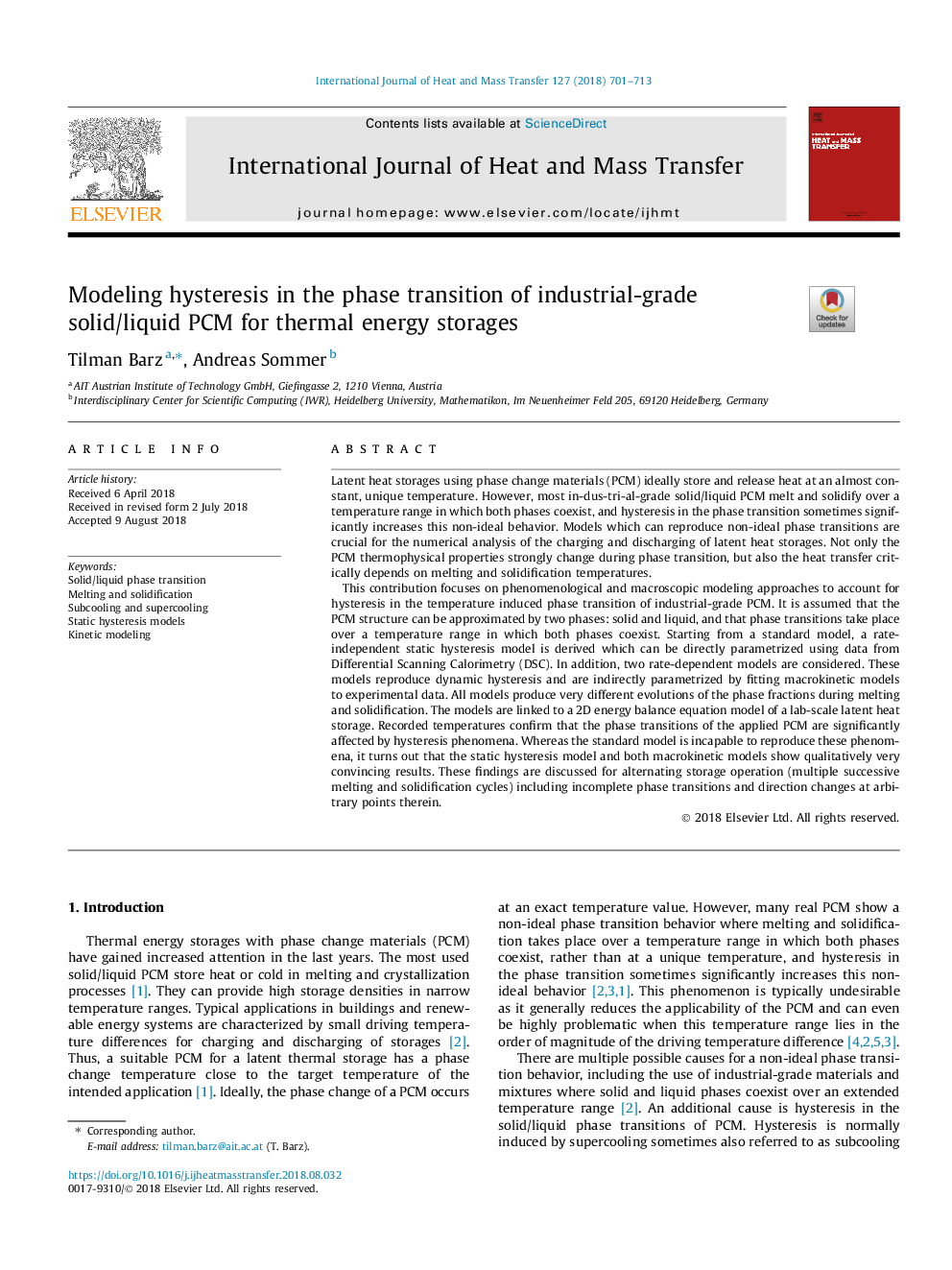| Article ID | Journal | Published Year | Pages | File Type |
|---|---|---|---|---|
| 8942020 | International Journal of Heat and Mass Transfer | 2018 | 13 Pages |
Abstract
This contribution focuses on phenomenological and macroscopic modeling approaches to account for hysteresis in the temperature induced phase transition of industrial-grade PCM. It is assumed that the PCM structure can be approximated by two phases: solid and liquid, and that phase transitions take place over a temperature range in which both phases coexist. Starting from a standard model, a rate-independent static hysteresis model is derived which can be directly parametrized using data from Differential Scanning Calorimetry (DSC). In addition, two rate-dependent models are considered. These models reproduce dynamic hysteresis and are indirectly parametrized by fitting macrokinetic models to experimental data. All models produce very different evolutions of the phase fractions during melting and solidification. The models are linked to a 2D energy balance equation model of a lab-scale latent heat storage. Recorded temperatures confirm that the phase transitions of the applied PCM are significantly affected by hysteresis phenomena. Whereas the standard model is incapable to reproduce these phenomena, it turns out that the static hysteresis model and both macrokinetic models show qualitatively very convincing results. These findings are discussed for alternating storage operation (multiple successive melting and solidification cycles) including incomplete phase transitions and direction changes at arbitrary points therein.
Related Topics
Physical Sciences and Engineering
Chemical Engineering
Fluid Flow and Transfer Processes
Authors
Tilman Barz, Andreas Sommer,
